—Telescopes and microscopes, instruments resulting from the knowledge and expertise of glass artisans, were a great contribution to the development of the new experimental philosophy of the seventeenth century.—
From the end of the fifteenth century and throughout the sixteenth century, knowledge about nature became increasingly visual, as the use of devices and technical resources derived from printing and engraving spread, but also as the new social values of artists and natural philosophers prevailed. Making objects, specimens or phenomena visible through iconographic representations that could not otherwise be fully understood, ended up having important consequences for scientific knowledge, as well as for the way in which it was constructed and communicated. In this context, the invention, in the last years of the sixteenth century, of two instruments that made it possible to visualise objects that were not within the reach of the human eye would have a huge impact on our way of understanding the cosmos, forms of life and the composition of matter during the next two centuries. We are talking about the telescope and the microscope. However, their change from the artisan environment where they were invented to other social spheres, including that of scholars of natural science, was a long process, not without interesting aspects, regarding both the order of knowledge and, especially at the beginning, the level of cultural and social prejudices as to the construction and interpretation of reality.
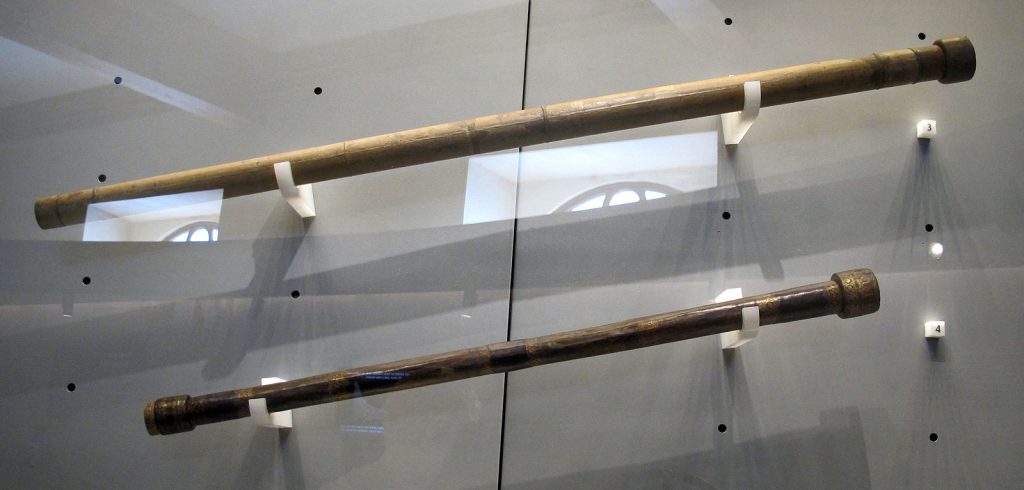
Galileo’s two telescopes, dated around 1609, kept in the Museo Galileo (Florence). Wikimedia.
Thus, the use of the telescope and microscope in the hands of natural philosophers of the seventeenth century substantially contributed to the establishment of new criteria of proof and credibility, criteria that were captured in a special way in experimental demonstrations. Looking at the vastly distant through the telescope and the infinitely small through the microscope shaped experimental practices that are the invention of seventeenth-century European science and their effects were noted all over the globe. Systematic programmes of experimental observation mobilised an increasing number of people, and the brand new instruments that enabled these observations travelled in the ships of explorers and the luggage of sailors, soldiers, evangelisers and colonisers.
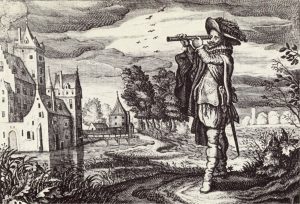
A Dutch gentleman looking through a telescope. Engraving by Jan van de Venne (1624). Wikipedia.
On the one hand, the configuration of a kind of new ethics for philosophical experimentation (although often based on undeniably classical roots) made it possible to adopt and adapt a series of rules that would govern, from then on, the obtaining of scientific facts on which experimental philosophy drew. On the other hand, publishing the results of observations made through the telescope or microscope in books or in the first scientific journals and publications became a further component of the behaviour inherent to the scientific culture of the Republic of Letters. Thus, both the fruits of philosophical speculation and inquiries into nature, and the results of observations through these instruments based on the knowledge of the use of lenses and optics were now submitted to the public arena.
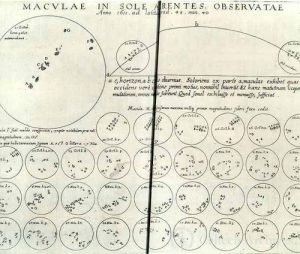
Engraving of sunspots observed by Galileo through his telescope (1613). Galisphere.
As Steven Shapin and Simon Schaffer once pointed out, the experimental production of scientific facts was based on consensus, on certain tacit agreements between the figures involved. One of these tacit agreements was the guarantee reliable testimonies based on respecting the rules of conduct in communication ‘between gentlemen’ on the results of their observations and experiments. Therefore, communicating experiments (and doing so in an appropriate manner considering the expectations of the agents involved) became an essential practice of experimental philosophy in its quest to achieve greater social visibility. Hence the importance of these two instruments, which provided not only an unprecedented view of the celestial world or of the internal structures of living beings or terrestrial productions, but also reliable, socially acceptable evidence of various aspects of natural reality.
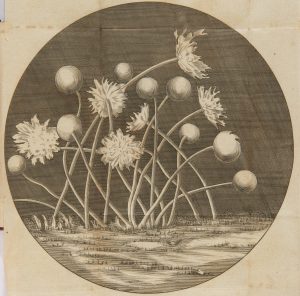
Grabado de un fragmento de piel de gato observado al microscopio, publicado en el Journal des sçavans (1666). Pablo Lines, Biblioteca Salvador, Institut Botànic de Barcelona.
The making of these new instruments was far from achieving a standardised mode of production in the mid-seventeenth century. Close contact between the instrument maker and its subsequent user was essential. This contact was the origin of the first telescopic or microscopic observations for scientific purposes. In fact, the knowledge surrounding the making, handling and use of lenses did not come from natural philosophers but from artisans. The boundaries between artisans and experimental philosophers were, of course, unclear. Robert Hooke was considered for generations as a mere assistant to Robert Boyle, because he built telescopes and microscopes with his own hands, using artisan knowledge devoid of the social prestige of the gentleman philosopher. Moreover, many enthusiasts of telescopic observation, and many of those who contributed to perfecting the instruments, were people lacking both social standing and conventional academic training.
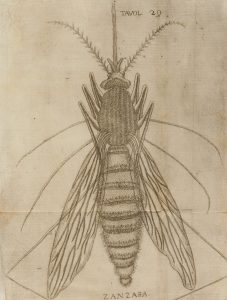
Grabado de un mosquito observado al microscopio por Francesco Redi, 1688. Pablo Lines, Biblioteca Salvador, Institut Botànic de Barcelona.
Another relevant characteristic of artisan cultures was their direct relationship with objects, materials and instruments that, properly manipulated or technically modified, would serve to measure, quantify and control the experimental protocols of natural philosophers. Finally, artisan cultures also provided spaces to develop these experimental practices. The artisan workshop – of the lens maker, painter or apothecary who, in that sense, was still another artisan – broke into the list of scientific spaces.
In the present day, the strong relationship between these spheres and instruments is evident. For example, when an academic community needs to make observations using an electronic microscope, it is common to set up a certain laboratory space, with defined characteristics and specific rules to locate it within buildings that also house medicine industries, hospitals or universities. It is interesting to imagine what the introduction of the telescope could mean, from this same point of view, in the practice of mathematicians such as Galileo, or the arrival of microscopic observation in the work of naturalists, anatomists or natural philosophers. University buildings, court palaces, private rooms and merchant warehouses adapted to these innovations, to the requirements of the practice of an experimental philosophy that was increasingly better socially and politically valued.
José Pardo Tomás
IMF-CSIC
How to cite this paper:
Pardo Tomás, José. Breaking the barrier of the invisible. Sabers en acció, 2020-12-16. https://sabersenaccio.iec.cat/en/breaking-the-barrier-of-the-invisible/.
Find out more
You can find further information with the bibliography and available resources.
Recommended reading
Long, Pamela O. Artisan/Practitioners and the Rise of the New Sciences, 1400-1600. Corvallis: Oregon State University Press; 2011.
Neri, Janice. The Insect and the Image: Visualizing Nature in Early Modern Europe, 1500—1700. Minneapolis: University of Minnessotta Press, 2013.
Shapin, Steven; Schaffer, Simon. El Leviathan y la bomba de vacío. Hobbes, Boyle y la vida experimental. Bernal: Universidad Nacional de Quilmes; 2005.
Waquet, François. L’ordre matériel du savoir. Comment les savants travaillent (XVIe-XXIe siècles). Paris: CNRS; 2016.
Studies
Gerritsen, Anne; Riello, Giorgio (eds.) Writing Material Culture History. London: Bloomsbury; 2015.
Lawson, Ian. Crafting the Microworld: How Robert Hooke Constructed Knowledge About Small Things, Notes and Records of the Royal Society, 2016; 70 (1): 23-44.
Lüthy, C: H. Atomism, Lynceus, and the fate of 17th-century microscopy, Early Science and Medicine, 1996; 1 (1): 1-27.
Reeves, Elleen A. Evening News: Optics, Astronomy, and Journalism in Early Modern Europe. Philadelphia: University of Pennsylvania Press; 2014.
Smith, Pamela H.; Meyers, Amy R. W.; Cook, Harold J. (eds.) Ways of Making and Knowing. The Material Culture of Empirical Knowledge. Ann Arbor: University of Michigan Press; 2014.



